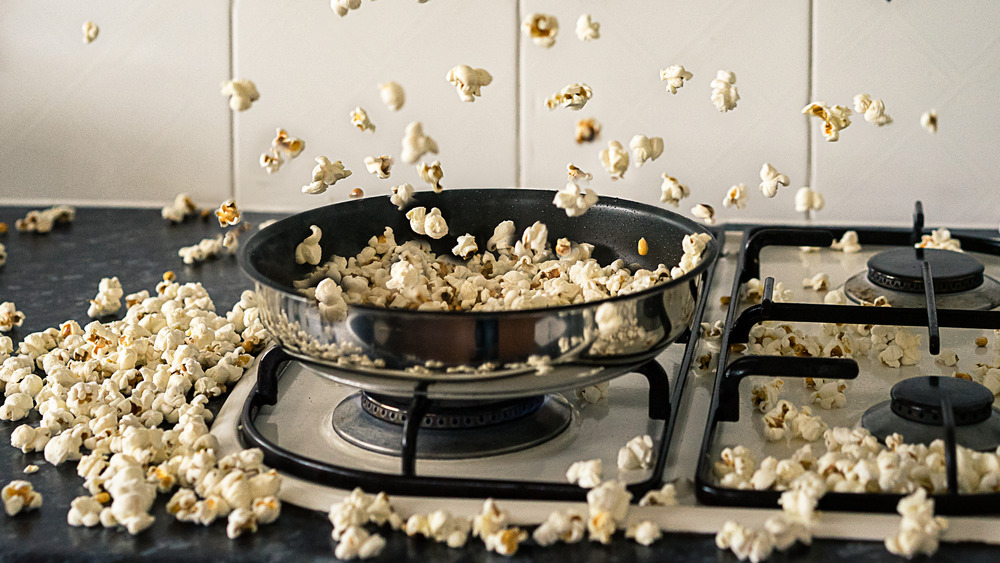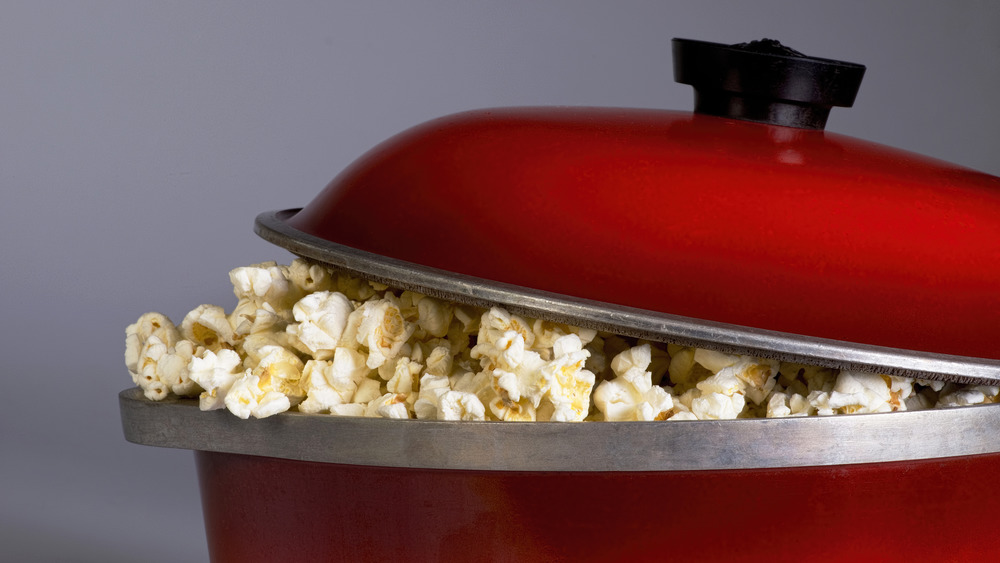What Type Of Pot Should You Use When Making Popcorn?
Coconut oil or canola oil? Medium heat or high heat? Salt before or after the kernels pop? These are some of the home cook's most common questions when making popcorn on the stove. While the stovetop-pop process is definitely more complicated than sticking a bag in the microwave, it's approachable for anyone with a pot, a flame, and a handful of kernels. Plus, whether it's kettle corn or buttery movie-theater goodness, it tastes even better when you pop it yourself.
There are many mistakes one can make when cooking popcorn on the stove, but one of the worst is choosing the wrong pot. Luckily, it's a simple matter of selecting a cooking vessel with a lid and a heavy bottom, "which will prove to be far more heat conductive than other pots," according to the Auguste Escoffier School of Culinary Arts. A lighter-weight pot, on the other hand, won't distribute heat as evenly and can lead to hot spots that burn some kernels and leave others unpopped, Cookie and Kate explains. The material of the pot is up to you — Bon Appétit recommends enameled cast iron, while Fine Cooking says that a hard-anodized aluminum stockpot, such as one by Calphalon, is nice and sturdy.
How to use the correct pot for successful stovetop popcorn
Once you've chosen the correct popcorn pot, you need to make sure you use it well. That means heating it to the right temperature. Food blog House of Nash Eats recommends using the "two-kernel temperature test," or placing just two popcorn kernels into your oiled pot of choice and waiting for them to pop. Once they do, you'll know that the temperature is high enough to pop the rest of the kernels. Add them to the pot off the heat, the blog suggests, so they can come up to temperature before the oil gets too hot.
The lid comes in at the next step. Place the pot back on medium heat, cover, and shake it every moment or so once the popping begins (via Bon Appétit). The lid is important not only to maintain high heat, but to create steam, which will pop the kernels with its concentrated heat. When the time between each pop grows longer, remove the lid slightly so that the steam can escape and the popcorn will stay crispy. Empty the popped corn into a big bowl, shower it with oil or butter and other flavorings, and wonder why you ever bought the bagged stuff.

